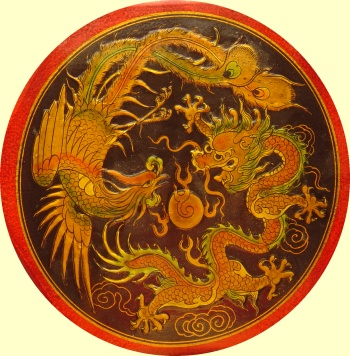 The Chinese dragon symbol occupies a special place within China. Find out about the historical use of the symbol and how it is being incorporated into current Chinese culture.
The Chinese dragon symbol occupies a special place within China. Find out about the historical use of the symbol and how it is being incorporated into current Chinese culture.
The Chinese dragon is one of the most beautiful mythical creatures that have been a prominent part of a number of East Asian cultures. The oriental dragon is essentially Chinese in origin. The typical physical appearance of the dragon is portrayed as long and scaly with serpent like features except for the fact that it has four legs with fives claws on each foot.
In terms of its physical features the Chinese dragon is quite different from the traditional European dragon which also stands on four legs but is believed to have a negative connotation.
The different meanings of the dragon symbols
The Chinese dragon on the other hand has assumed both roles of good and evil throughout Chinese history. But more than anything else the symbol of the dragon represents auspicious power according to ancient folklore and art from China.
Another interesting yet seldom known fact about the Chinese dragon is that it is often taken as the symbol of male which is yang in Chinese. There are a number of other beliefs that the Chinese dragon is sought to symbolize such as the bringer of rain and water in a country that is heavily dependant on agriculture. In general the Chinese had a tendency to ascribing various divine attributes to the dragon.
The Chinese dragon also has a female counterpart who is not featured very often. The female version of the Chinese dragon is known as the phoenix. Many westerners assume the Chinese dragon to be the official symbol for the country of China. However this is untrue to the fact.
It is true that the Chinese dragon symbol was used to denote the emperor of China in the good old days. In fact during the Yuan Dynasty no civilian was even allowed to associate themselves with the symbol of the dragon. The Qing Dynasty however brought the Chinese dragon symbol back into action as it started appearing on the national flag during those times.
The change in perception
China has deliberately and desperately tried to disassociate itself from the dragon symbol due to the negative political connotations associated with it. Because the image of the dragon had a threatening war like perception in the eyes of the west the Chinese wanted to replace that image with a softer symbol. The alternate was the giant panda which is now taken as the emblem of China.
The public of China is however still very fond of the Chinese dragon symbol and in fact many of them refer to themselves as descendants of the dragon with regards to their ethnic identity. The 1970s saw a trend where nations were ascribing themselves with a certain animal like the Mongols with the wolf and the Tibetans with the monkey.
The Chinese dragon symbol still occupies a special place in modern Chinese society. More than anything else however it is used solely for decorative purposes. From advertisement campaigns to T-shirts, posters and tattoos the symbol of the dragon can be seen throughout the streets of China.




